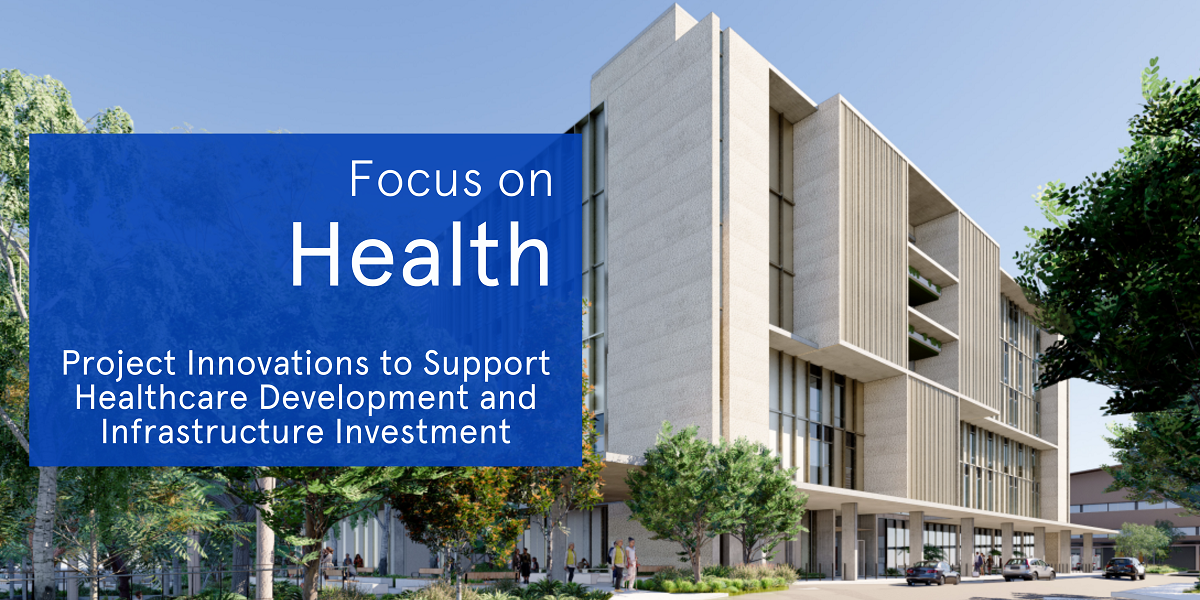Pipelines, Projects and a Healthy Opportunity to Deliver Works Differently

It is an exciting time to be involved in the Health Sector in Queensland as the State Government invests in critical infrastructure to meet the state’s healthcare needs. Fresh from the success of the innovative Australian first $280 million Satellite Hospital Program, which supported new facilities located in areas that included Caboolture, Pine Rivers, Eight Mile Plains and Bribie Island, further investment in healthcare has been announced with key projects being brought to market.
Inertia’s Scott Clements looks at what is next in healthcare investment and how a new approach to design and delivery will ensure the success of the ambitious series of projects.
As our population ages, healthcare investment ensures that people have access to high-quality facilities across the state so that your postcode and location become less of a barrier to accessing the care you need. That is fantastic news for Queenslanders.
It is also great for the industry. All industries thrive on certainty, and a clear pipeline of projects benefits the State Government’s delivery partners as we can plan support with confidence as to how the sector will invest in people, capabilities, training, and development.
But, as anyone involved in the industry will tell you, even the most certain of pipelines will face challenges when it comes to delivery, especially when we are operating in a market under a series of external forces across costs, material supply, people, labour, skills competition and more.
And that means that we must look at how we deliver projects because any challenge can be overcome with collaboration, ingenuity, a preparedness to do something different and a willingness to reassess commercial frameworks and contracts.
Here are the key things I think the industry needs to focus on to support Queensland Health’s delivery strategy:
- Advanced procurement – Utilising an advanced procurement strategy that incorporates designers, architects, and contractors as early as possible in the process is key to success. It ensures a collaborative approach to work, sharing ideas and opportunities for improvement while minimising scope and schedule creep, reducing the risk of rework and costs/schedule blow-outs.
- Advanced early works – Following advanced procurement and/or early contractor involvement, projects can commence earlier, especially across early works, so that designs can be finalised, sites prepared for construction, materials specified, and procurement lists completed. Each element that can be done ahead of full-scale construction means that schedules can be compressed.
- Steel frame vs concrete frame – Steel frame construction is typically quicker than concrete framed construction during the site phase. Whilst steel frame construction will typically have a higher cost in Queensland and require more upfront planning, the current constrained subcontractor market will give rise to construction techniques that are alternative to concrete.
- Pre-fabricated systems – As the sector approaches pre-fabricated construction with increasing regularity from pre-cast bridges to composite structures, prefabrication has an important role to play, enabling manufacturing to take place off-site with elements delivered when needed. This improves manufacturing opportunities and minimises site disruption, as key works can occur remotely before assets are delivered. These systems (including permanent formwork on steel frames) also reduce our reliance one of the highly constrained trades, formwork.
- Modular construction – With pre-fabrication techniques, minimised onsite requirements, quicker time frames and other benefits, modular construction can support the delivery of key project pipelines like those of Queensland Health due to its ability for offsite preparation, minimised pre-works and simplicity of on-site construction.
There is no doubt that Queensland Health’s project pipeline is vital to the state’s ongoing health strategy and the needs of Queenslanders. Undoubtedly, the industry will be under pressure to meet the pipeline’s schedule of projects. But there is also no doubt that, as an industry, we have the people, technologies, and desire to succeed. That means a healthy future for everyone involved, from government, consumers and health professionals to the construction sector and its supply chain.
 Back to News
Back to News
